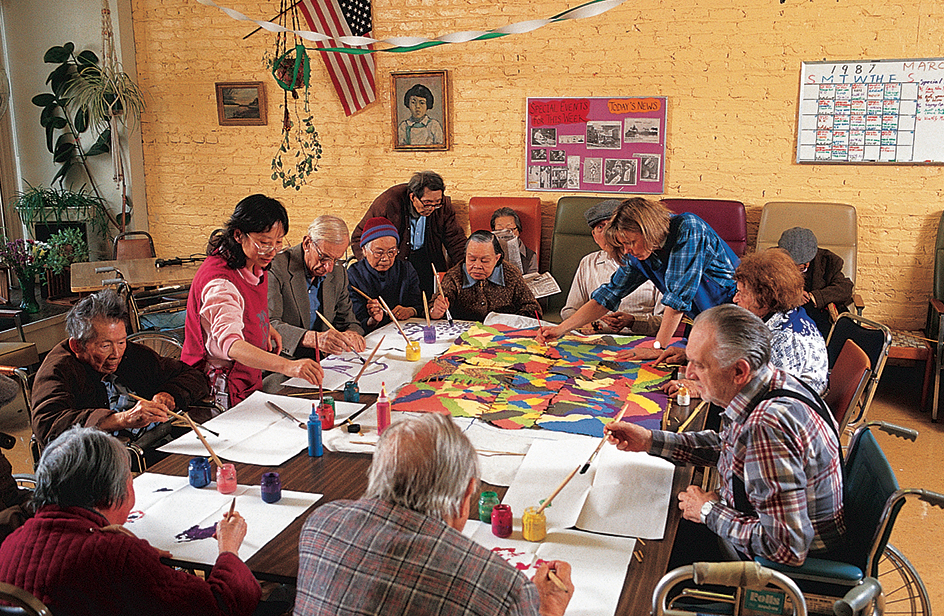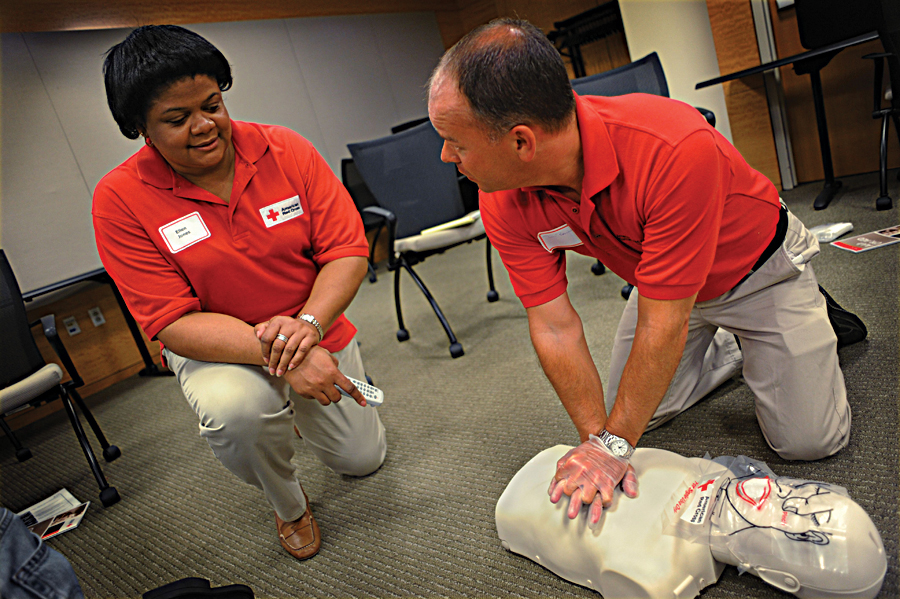Adult education is a broad term that covers a variety of types of learning by adult students. Students are usually considered adults if they have completed high school or are at least 18 years of age.

Educators use many different terms when referring to adult education. Often, the term used depends on the location or sponsor of the learning activities. For example, universities and colleges tend to use continuing studies or continuing education. A community-based nonprofit organization, such as a YMCA, might call its adult education offerings lifelong learning. In a workplace, the terms training or professional development might be used.
Adult education is found in most countries of the world. In the United States, for example, a large percentage of adults participate in some type of formal educational activity. Many adult students participate in work-related courses or training. Some adult learners study English as a Second Language (ESL). Others take General Educational Development (GED) preparation classes, which lead to a high school equivalency diploma. Some adult learners are enrolled in college or university degree or certificate programs. Others are involved in vocational or technical training programs.
Adult education can enable people to improve their quality of life. It is also a way of helping people to feel more included in society and of supporting their participation in a strong civic community. Adult education is often a means of economic development for states, regions, and nations as well.

Types of adult education.
Adult education can be grouped into categories depending upon the type of instruction as well as the setting where learning takes place.
Formal adult education
consists of classes taught by an instructor in an educational setting. Such settings include community colleges, universities, museums, and libraries. Formal institutions frequently award a student who has completed a course of study with a degree or certificate.
Corporate “universities” also employ instructors in an educational setting. Such universities teach management and business skills for a specific corporation. In addition, some corporate university programs offer courses that grant college credits. The Boeing and Walt Disney companies and the McDonald’s Corporation are just a few of the many businesses that have a corporate university.
Nonformal adult education
uses an instructor but does not take place in a school or other formal educational setting. Nonformal adult education classes are usually focused on a particular problem, issue, or activity. They typically run for a short period. The setting for such classes is often a community-based organization. Examples of nonformal adult education include scuba-diving instruction at a YMCA; home-improvement instruction at a building center; or emergency medical training, such as training in cardiopulmonary resuscitation (CPR) at a Red Cross office. 
Informal adult education,
additionally known as self-directed adult education, is most often started and managed by the learners themselves without the aid of an instructor. Informal learners want to gain new knowledge or skills to address an issue, a problem, or an interest that they themselves have identified. For instance, a person could build a birdhouse by following the directions in a book.
Distance learning.
Since the 1990’s, all types of adult education have expanded their range with distance learning. Distance learning, also called distance education, is a process in which students learn by using resources that are far away from them, even in another city or country. The students gain access to the resources, including instructors, by using available communications systems. During the late 1800’s and early 1900’s, for example, a form of distance learning called correspondence study used the mail. In the mid-1900’s, distance classes were taught on radio, and in the late 1900’s, they were taught on television.
Internet-based online education became the most common means of teaching at a distance in the 2000’s. Programs of study using podcasts, e-book readers, applications for smartphones and tablet computers, and conventional computers all work to allow students to learn in nearly any setting. The availability of these technologies has significantly changed adult education. It is possible now to knit together adult students from many parts of the world into a single learning environment.
History of adult education in the United States.
Adult education has its roots in colonial America. Apprenticeships in the various trades were used prior to the founding of the United States. These apprenticeships represent an early system of vocational training. Formal organizations of adult learners emerged in colonial times as well. For example, the American inventor and statesman Benjamin Franklin established an organization called the Junto in 1727. The Junto created opportunities for working men, businessmen, and professionals to debate politics, business affairs, philosophy, and moral behavior.
In the mid-1800’s, the Industrial Revolution changed the pattern of adult education. The Industrial Revolution was a period during which technology advanced rapidly. The development of industrialization caused businesses to need a more skilled and educated work force. Workers also saw education as a way to increase their chance of employment. From these needs emerged the mechanics’ institutes, schools formed for the education of manual workers. Mechanics’ institutes allowed members of various trades to learn from one another. The institutes often included lectures on applied science, a library, a laboratory, and a museum.
From the 1820’s until after the American Civil War (1861-1865), organizations called lyceums sponsored lectures, concerts, and other adult education programs. Lyceums provided adults with a place for discussing and understanding the political and educational issues of the time. Teachers’ institutes also came about in the 1800’s as a place to hear lectures and discussions on topics of importance to educators. Institutes for teachers most often took place in the summer at some appealing location, such as the mountains or seaside.
Farmers’ clubs and farmers’ institutes were started and grew in the period following the creation of land-grant universities. These universities began with the passage of the Morrill Act of 1862, which granted every state a piece of land to be sold. The income from the sale was used to create and maintain colleges. These new American universities focused on teaching agriculture and the mechanical arts. Such schools took the university to the farmer with workshops, lectures, and correspondence study.
In the late 1800’s, a system of education aimed at adult learners called the Chautauqua movement was established. The movement began as a church camp for Sunday school teachers. It evolved into a nationwide, year-round program of lectures and readings. The movement provided education that brought adults into contact with current thought on scientific and social issues. It provided a way for people to participate in discussions on such issues. Chautauqua argued that education for adults was both a right and a duty. Chautauqua leaders believed that adults were able to learn and that education should be extended beyond formal schooling. The Chautauqua movement believed in the idea that learning should be lifelong.
University extension programs developed in the late 1800’s. These programs were used to reach students who lived far from a university or who could not attend full time. The Chautauqua movement had a strong influence on the establishment of university extension programs. Many Chautauqua leaders went on to work in higher education and brought the values of the movement to the colleges and universities they joined. Most notable among the Chautauqua leadership in higher education was William Rainey Harper, the founding president of the University of Chicago. Harper founded an extension division at that university in 1892.
The establishment of American adult education in the 1800’s supported many changes in the following decades. It allowed adult education to help meet many of the social and economic needs of the country. Adult education in the 1920’s, for example, was a means of educating teachers who did not have bachelor’s degrees. In the 1930’s, during the worldwide economic slump known as the Great Depression, adult education sponsored by the Civilian Conservation Corps (CCC) aimed at improving job prospects for its members. Adult education was a part of the continuing education of U.S. armed forces after World War II (1939-1945). It was also an important tool in President Lyndon B. Johnson’s War on Poverty in the 1960’s.
Adult education continues to play an important role in the country’s history into the 2000’s as a means of economic development and enriching the lives of an increasingly older population.
